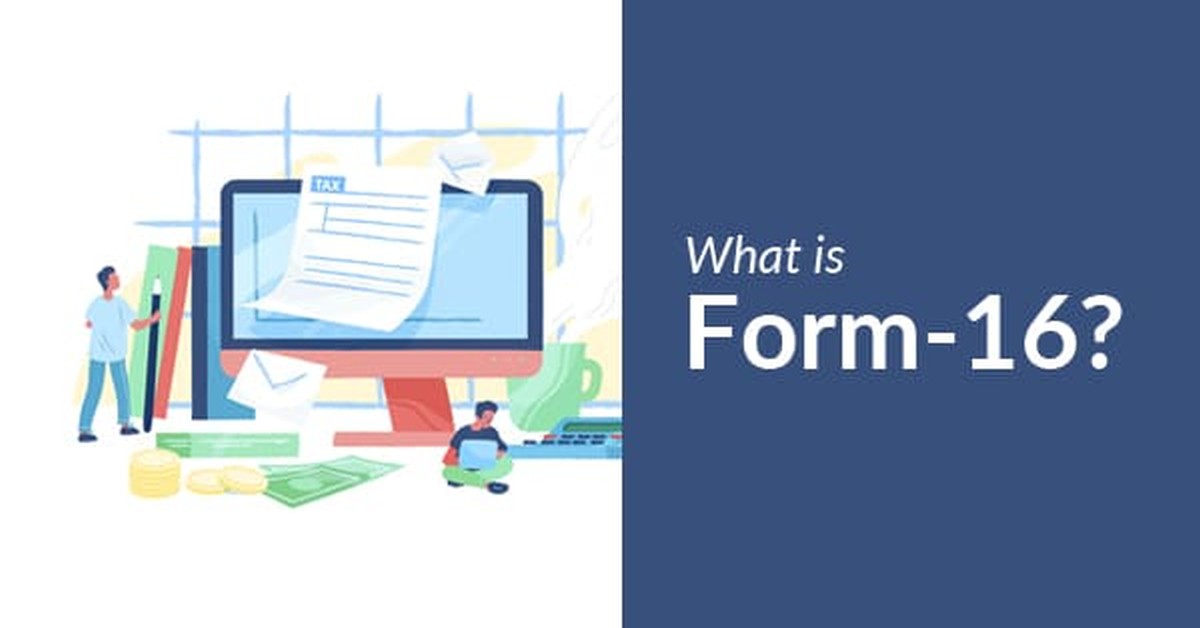It's that time of the year again when your employer hands over your Form 16. Many people, especially, first-timers, are unable to understand this document. Here's an explanation to what is the Form and what you should do with it.
How to get Form 16?
Every year your employer will issue this document. It is one of the most important income tax forms for salaried individuals.
Form 16 comes u/s 203 of the Income Tax Act,1961 and is a certificate provided by your employer which certifies details regarding the salary you have earned during the year and how much TDS has been deducted.
How to Download Form 16?
The Form can't be downloaded by an employee, it can only be issued by your employer. Form 16 is a TDS Certificate and it is to be issued by your employer only. People generally have this misconception that the Form can be downloaded from TRACES website. But that does not hold true.
What's Form 16 Part A and Part B?
Understanding the content of Form 16 enables you to streamline the processes for filing your ITR(Income Tax Return). You may be able to do it yourself if your income comes entirely from your salary, and you have no other source of income. The Form has two segments—Part A and Part B.

Part A and its components:
Part A comprises of Employee and employer basic details such as
• Employer's Name and address
• Employee's name and address
• Permanent Account Number (PAN) of both
• Employer's Tax Deduction Account Number (TAN) and others.
Part A also gives details regarding Assessment Year (A.Y.), tax deducted and the dates when the amount was deposited with the Central Government and details of a challan issued by the government thereby. This portion of the form also gives details of your period of employment with the current employer.
Part B and its Components:
Part B is an important part of Form 16 since it gives most of the details that you will need to file an Income Tax Return(ITR), such as salary paid, other income, tax deducted, and more.
It is the breakup of how your tax was computed considering the investment declaration you made at the beginning of the Financial Year and the proof of investment submitted thereupon.
It also has the details of other allowances that your employer-provided to you that may be necessary for tax computation purposes; and any other details – such as house rent, medical bills, home loans and donations exempt from taxation that you may have furnished to the employer. The details include:
• Gross salary
• Salary as per provisions contained u/s 17(1)
• Value of perquisites obtained u/s 17(2)
• Profit in lieu of salary u/s 17(3)
• Allowances to the extent exempt u/s 10
• Tax on employment
• Any other income reported by the employee, if any
• Detailed break-up of deductions under Chapter VI-A such as 80C, 80CCC and 80CCD which include (the list is not comprehensive) details like Provident Fund (EPF/PPF) Housing Loan, National Saving Certificate, Life Insurance Plans, tax saving mutual funds (ELSS), and any other investments in tax saving schemes
• Deduction u/s 80D (health insurance premium)
• Deductions under Other sections of Chapter VI-A
• Tax on total income
• Any cess levied
• Any rebate on tax
• Any surcharges
If you have been employed under more than one employer during the year, each of your employers will provide you a Form 16.
How to use Form 16 to file ITR(Income Tax Return)?
• It is one of the most critical documents that you need to keep handy when filing your ITR. You can either file your return yourself or seek help from your Chartered Accountant or any other competent person to file returns online on your behalf.
• As one of the most important tax forms, it contains most of the information needed to prepare your income tax returns in India.
• While all details related to deductions are mentioned in the Form, you should cross-check the amounts with your investment and other documents. If there is an error in your Form, you will have to ask your employer to rectify it since it is the employer who has generated it for you.
Is Form 16 mandatory?
Yes, It is mandatory for employers to issue the Form if TDS has been deducted from the employee's salary. In case no TDS has been deducted by the employer they may not issue you a Form 16. It is also beneficial for you to have the Form, so you can:
• Check for any discrepancies
• Compute taxes
• Check if you have fulfilled all your tax liabilities
• Look out for any refunds for overpaid taxes
While it's the duty of the employer to deduct tax at source, the onus to pay the tax and filing return is on you.
Can filing of Income Tax Return(ITR) be done without Form 16?
Yes, You can file your Income-tax returns without the Form provided you know the details mentioned in Part A and Part B of the Form. You may also refer to your salary slips & Form 26AS.
What to do if TDS is deducted by the employer but Form 16 has not been provided?
• If you have not received From 16 from your employer, you can refer to your Form 26AS available online. Form 26AS contains the details about the tax deducted from your salary and deposited with the government. However, you should also request your employer to issue the Form. For knowing all about Form 26AS do check out What is Form 26AS?
• In case the employer hasn't deposited the tax since the tax burden is on you, you will have to pay the tax online/offline and claim it later from your employer.
• An employer may be liable to pay a penalty for non-issuance of the Form where TDS was deducted.
What to do when there is any mismatch in Form 16?
There are instances when the information in Form 16, Form 26AS and payslip does not match.
In case of any mismatch in your payslip and Form 26AS, you should intimate your employer about it and get it rectified.
The employer will revise the TDS statements submitted to the department with the correct figures and the same will be reflected in your Form 26AS.
Before proceeding with the rectification or revision of the statement, you should cross-check the details and try to interpret the reason for such mismatch.
As a taxpayer, you must be aware of the reasons for such mismatches. Following are some of the popular reasons for the mismatch in the forms discussed above.
• Employer failed to deposit TDS with the government
• Mismatch in PAN
• Omission of employee details in the TDS statement
• TDS statements of the employer not processed due to errors, for example, incorrect challans.
• Non-filing of TDS statements or delay in filing of TDS statements by the employer
Once the mistake is identified, you should ask your employer to rectify the mistake and provide you with the correct Form 16. The tax filing due date is around the corner and in case the mismatch is not rectified sooner, you will end up missing the deadline for filing income tax returns.
Even if you are unable to identify the reason for the mismatch, you should discuss it with your employer. The employer will examine the reasons for such mismatch and revise his TDS statement accordingly.
Once the statement is revised, he can provide you with a rectified Form and you can proceed with your income tax return filing.
FAQs
Is salary slip & Form 16 same?
No, salary slip gives an idea of monthly salary whereas Form 16 is a broader perspective. It helps in filing ITR.
Is it necessary to issue Form 16, even if the employer has not deducted tax on salary?
No, not necessary. It is issued when Tax has been deducted by the Employer. In case no Tax has been deducted by the Employer, Form does not need not be issued.
If I don't get a Form 16 from my employer, does this mean I don't have to pay tax or file returns?
While deducting TDS and providing Form 16 is the employer's job, paying your income tax and filing returns is yours. If your total annual income is taxable, you are required to pay tax, whether your employer deducts TDS or not.
Happy Reading!
Also Read:






 CAclubindia
CAclubindia

